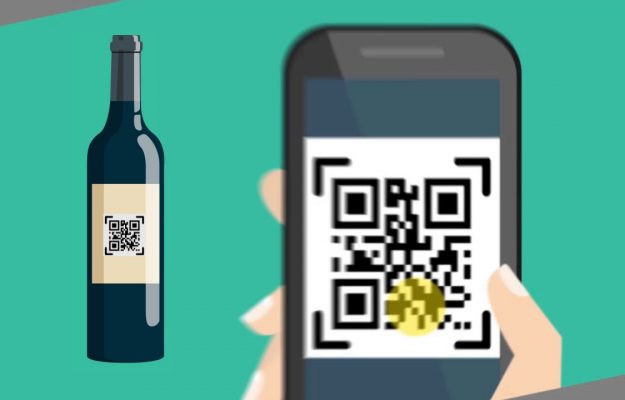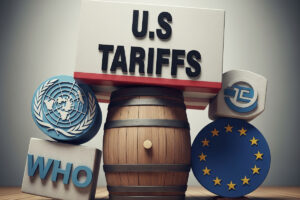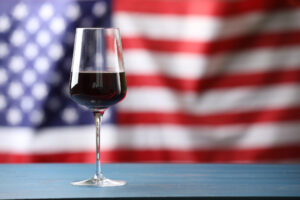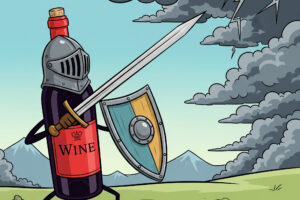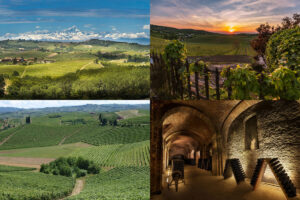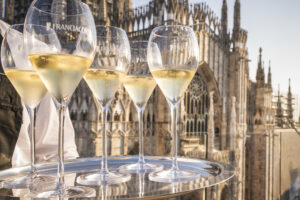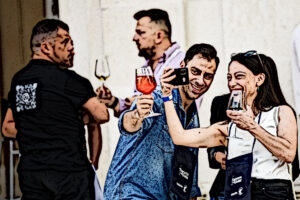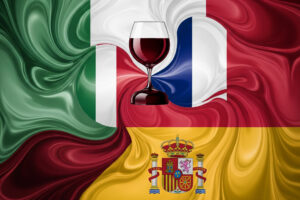To meet the sacrosanct need of consumers to be informed about what they drink, without turning wine and spirit labels into information leaflets like those on drugs, with technology now familiar to many such as the Qr-code (the same one used for the Green Pass), which allows companies to provide all the information required by law, “translating” them automatically into all 24 languages of the European Union. This is envisaged by U-Label, the electronic labeling platform set up by Ceev - Comité Européen des Entreprises Vins and SpirtsEurope, an expression of the organizations of companies in the sector (of which Unione Italiana Vini - Uiv and Federvini are also members), presented today in Brussels, and which, from November 1st, will be accessible to all wineries in Europe.
A tool that will be used to comply with the new labeling obligations for alcoholic beverages provided for by the new CAP, which will thus be able to be written either on the physical label, for those who wish to do so, or alternatively provided in digital form (with the exception of some information that will be compulsory on the bottle, such as that relating to the indicative calories per 100 ml of product, for example). Obligations that, at EU level, will be mandatory from 2023, while what is starting now is a transitional period in which there will be time to experiment and refine a tool, that of the electronic label, laboriously won by the wine & beverage sector in negotiations with the European legislator.
“This platform responds to consumer demand for more information. Empowering consumers to make healthy food choices, including with regard to alcoholic beverages, is one of the Commission’s key objectives. We will all have to work together towards a new harmonized framework for the labeling of all alcoholic beverages”, said Claire Bury, Deputy Director-General of the European Commission’s Health and Food Safety Directorate.
“Today’s consumers expect more transparency about the products they consume, and digital labeling can meet this demand by increasing the information companies share with their consumers, without changing the appearance of the packaging”, commented Jean-Marie Barillère, Ceev President.
An important innovation, a first in the food sector, that of the electronic label, with the wine sector confirming its role as “pioneer”. “We decided to create U-Label to offer all wine and spirits companies an affordable turnkey solution to embark on this digital journey. We are proud to be able to provide this innovative multilingual tool two years before the new labeling rules become a legal obligation for wine producers as part of the CAP reform”, stressed Ignacio Sánchez Recarte, Secretary General of Ceev.
“The European spirits industry has already committed to providing energetic label and ingredient information online in its 2019 Memorandum of Understanding on Consumer Information, and we are meeting the targets we set then”, emphasized Ulrich Adam, Director General of SpiritsEurope. “Consumers want comprehensive information at their digital fingertips. This is what we are voluntarily providing through U-Label. We are asking the European Commission to follow suit and set standards for digital labeling for all types of products, not to replace but to complement the information on the packaging with what consumers are looking for”.
Of the 15 pilot companies for the U-Label platform, three are Italian, namely Masi Agricola (a member of Federvini), Zonin 1821 and Mgm Mondodelvino (in Unione Italiana Vini), along with big names in French and Champagne wine such as Taittinger and G. H. Mumm, Spain's Zamora Company and Campo Viejo, Portugal's Sogrape group and Belgian winery Le Domaine de Mellemont. The platform provides a Qr-code for each registered product. By scanning the Qr-code on the label with their smartphone, consumers can access organoleptic and nutritional information about the product as well as indications of origin.
“Federvini supports and endorses this important project with enthusiasm and conviction”, commented Micaela Pallini, president of Federvini (whose Wine Group is led by Albiera Antinori, ed.), “thanks to which the wine and spirits sector is committed to disseminating information on the composition of products and the nutritional declaration through new digital technologies. U-Label represents a milestone in food transparency: for the first time, consumers will be able to access information in their own language by scanning the Qr code on the label of their favorite wines, spirits and liqueurs. It is a tool that puts our sector at the forefront of the entire agri-food sector and that, by exploiting the potential of digital communication, fosters dialogue and trust between producer and consumer”.
According to Sandro Sartor, Vice-President of Unione Italiana Vini (UIV) and President of the European Wine in Moderation Association, “the wine sector is once again a pioneer and innovator in the field of consumer information, with Unione Italiana Vini - UIV among the first organizations to join the project and promote it. This is a crazy technological innovation”, Sartor emphasizes, “wine is the first sector ever to use digital technology to provide both legal and voluntary information with a view to consumer transparency. The option of using the electronic label is an option, and so the producer either creates his own electronic label and his own platform, inserting all the information required by law on a separate page from the commercial site, or he has to maintain it and draw it up in all 24 languages of the European Community. The Ceev, on the other hand, has created a common platform available to wine producers, and they will be the vast majority, who do not want to create their own platform. The way it works”, Sartor explained to WineNews, “is very intuitive: you register with your personal details as a producer, and then you register the different labels. Each label will have a specific Qr-code that will contain all the information relating to that individual label. When I enter the ingredients, which are already provided and pre-completed, the platform will automatically decline it in all the languages of the European Union. All this is affordable for everyone, given that we are talking about 250 euros per year per producer and 20 euros per label. This is an important opportunity for wine. We must not be afraid of how wine is made, and this tool is an opportunity to talk about the quality of wine, sustainability, it becomes not only an information tool but also a training tool”.
A tool that is already appreciated by those who will be among the first to experiment with it, as Raffaele Boscaini, Masi Agricola’s marketing director, explains: “we are delighted that Masi has been selected to represent Italy”, he comments, “in the pilot project to create an innovative platform for generating digital wine labels. For our part, we support this initiative with great conviction, which aims first and foremost to guarantee total transparency for the consumer. Technology is providing us with decisive support in this operation, allowing us to combine accurate and in-depth information with the pleasantness and originality of the packaging of a product with a long tradition”.
Copyright © 2000/2025
Contatti: info@winenews.it
Seguici anche su Twitter: @WineNewsIt
Seguici anche su Facebook: @winenewsit
Questo articolo è tratto dall'archivio di WineNews - Tutti i diritti riservati - Copyright © 2000/2025










